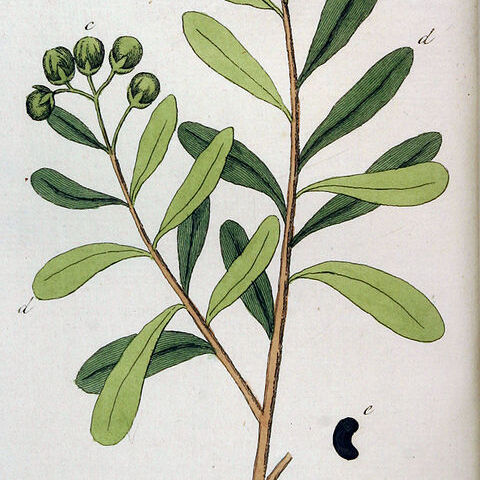Aromatic glabrous trees. Leaves simple, gland-dotted, alternate, without stipules. Inflorescences axillary or axillary and terminal, cymose; bracts three, persistent. Flowers regular, hermaphrodite. Sepals 4–5, free, rather thick, imbricate. Petals 4–12, free or connate, thin, imbricate or wanting. Stamens hypogynous, up to 20; filaments united into a tube; anthers extrorse, adnate to the upper part of the tube. Ovary superior, 1–locular; ovules 2–many, subanatropous; placentation parietal, placentae 2–5. Style thick and short; stigmas 2–5. Fruit a berry. Seeds 2–many, shining, with oily and fleshy endosperm
Stamens hypogynous, 6–12; filaments united into a tube; anthers extrorse, adnate to the upper part of the tube, bilobed, each lobe composed of two microsporangia
Petals 5–12, free or united into a tube at the base, rather thick, in 1 or 2 whorls
Ovary superior, unilocular; ovules 2-many on 2–6 parietal placentas, subanatropous
Leaves simple, alternate, gland-dotted, without stipules
Inflorescences axillary or axillary and terminal, cymose
Seeds 2-many, shining with oily fleshy endosperm
Style short and thick; stigmas 2–6
Flowers regular, hermaphrodite
Aromatic glabrous trees
Sepals 3, persistent
Fruit a berry
